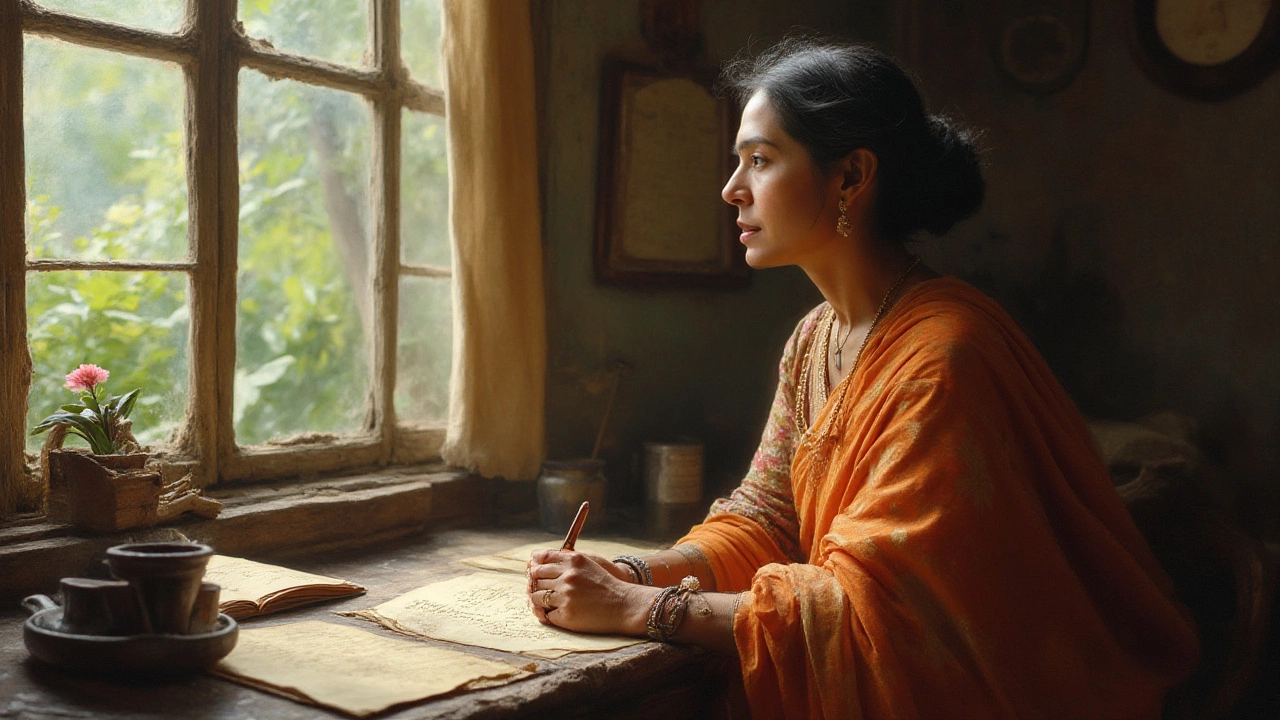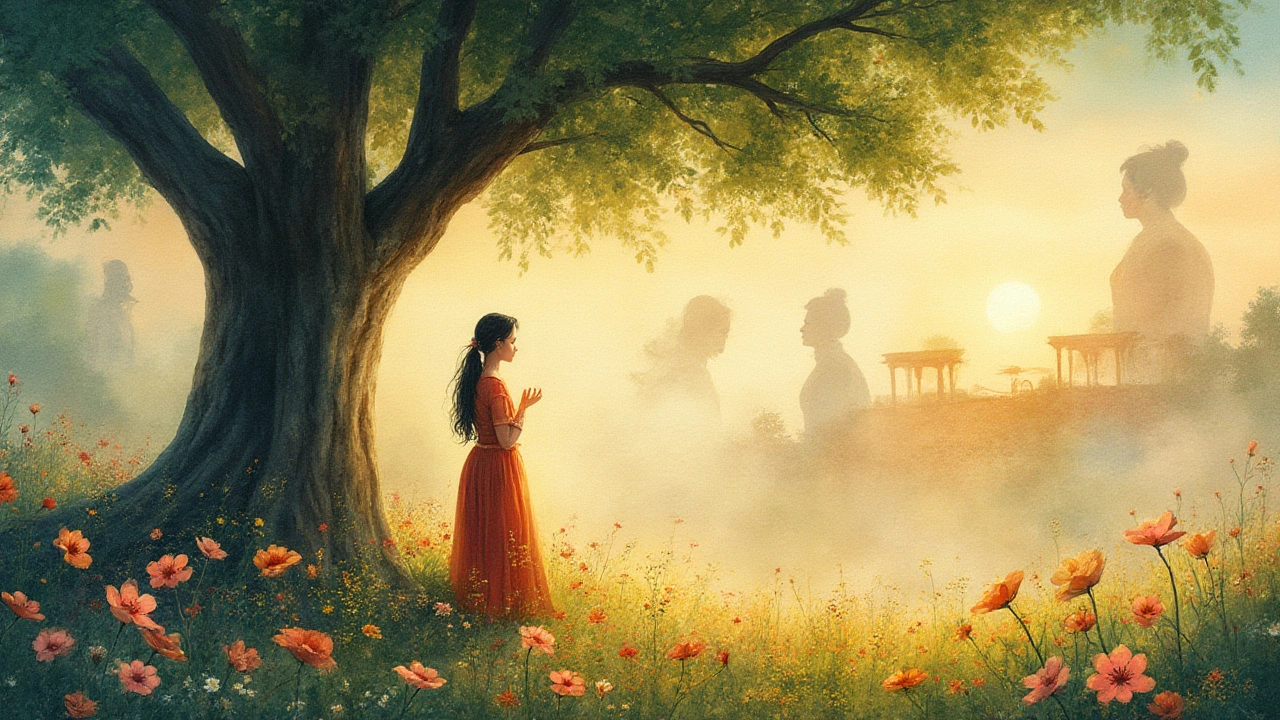
No family gathering was ever quite complete at my grandmother’s old house in Pune unless someone spontaneously recited a poem or hummed a verse. The real magic, though, wasn’t just in the lilting lines. It was the story my great-aunt would share, late at night, about a young woman called Toru Dutt, whispered about as the "mother of Indian poetry." Right away, that title sparks debate. Is it myth, or does it have roots in the stirring ground of Indian literature?
The Enigmatic Figure: Who Was Toru Dutt?
Imagine a teenager, fierce and bookish, growing up in 19th-century Bengal. Colonial rule, language barriers, and rigid boundaries for women—that’s where Toru Dutt began her poetic journey. Born in 1856, she was a linguistic prodigy, having mastered English, French, Bengali, and Sanskrit before she turned twenty. Her family moved between India, England, and France—a rare privilege in those days, exposing her to a smorgasbord of cultures. Sometimes I marvel at how she kept her identity rooted in her Indian heritage while embracing Western literary forms. Toru didn’t just write poems; she wove Indian myths and legends into ballads, sonnets, and lyrics much like the Romantics she admired. Her first collection, "A Sheaf Gleaned in French Fields" (1876), came out when she was just nineteen. Here’s the kicker: it was the first book of translations of French poetry into English by any Indian. Even today, bilingual publishing is tricky; imagine that challenge 150 years ago. Critics in London and Paris raved about the grace and maturity of her voice. She translated, interpreted, and created her own work, juggling genres and languages effortlessly. It’s no shock that her contemporaries and later generations dubbed her the "mother of Indian poetry." Not because she was the first, but because she gave Indian poetry a recognizable, modern female voice in English and French—an audacious leap for her time.
Defining "Mother": What Does It Actually Mean in Indian Poetry?
The term "mother of Indian poetry" is a lot more loaded than it seems. Who gets to wear the crown—someone who wrote first, influenced most, or inspired future writers? It’s true, Indian poetry traces back thousands of years. Names like Andal (the Tamil mystic poet), Mahadevi Akka, and Mirabai sparkle through medieval literary traditions. But historians and scholars tend to agree: Toru Dutt is different because she crossed the bridge from traditional forms to something daringly new. She didn’t just add a woman’s voice, she carved a place for the Indian woman in global literature. Instead of folk tales or religious hymns, Toru invented a new genre for Indian poets: English verse inspired by the East, speaking with a distinctly Indian perspective. Her famous volume, "Ancient Ballads and Legends of Hindustan," was published posthumously in 1882 and changed the conversation about who could write "important" poetry in English out of India. Dutt’s poems like "The Lotus" and "Our Casuarina Tree" blend nature, memory, and longing—emotions that felt recognizable to anyone, anywhere, and yet unmistakably rooted in the Indian landscape.
Her work isn’t only about “what” she wrote, but “how” she wrote. Toru’s language was intimate, elegant, never stiff. You can feel the intimacy in her sonnets: she grieved for lost siblings, mourned her homeland, and dreamed of cultural unity. Critics cite the expert way she moves between French and English idioms, always keeping the soul of her Indian heritage intact. To me, the “mother” moniker fits Toru because, even after dying at twenty-one, she laid the foundation for generations of Indian writers who’d experiment and succeed in two—sometimes more—world languages.

The Toru Dutt Effect: How Her Work Shaped Indian Poetry
Plenty of writers burn bright for a moment, but Toru Dutt’s spark still sets off fireworks in Indian poetry circles. Take the rise of English poetry in India—much of its growth traces back to her. She proved that poetry in English needn’t be a pale copy of the West; you could infuse it with local myths, colors, and heartbreaks. After her, came Sarojini Naidu, Kamala Das, and countless modern poets who slipped between languages feeling just as sure in English as in their mother tongues. Here’s an interesting fact: In 1876, Toru’s “A Sheaf Gleaned in French Fields” came out just as England was celebrating Wordsworth and Shelley, and Indian imagination was dominated by Sanskrit epics and Urdu ghazals. Her work forced publishers and critics to take Indian English writing seriously—she scooped up praise in journals from Calcutta to Paris and even got a glowing review in the Spectator. Over the next decades, university syllabi started including her along with the British bigwigs.
Her influence stretches beyond books and academia, though. Young women in the 20th century saw, maybe for the first time, that their stories could matter—whether set under a casuarina tree or a mango grove. There’s a scene I can never forget from one of Rohan’s old college texts: “Our Casuarina Tree” is alive and breathing on the page, and you sense the ache of losing something familiar. Toru Dutt’s poems work because she wrote about the things everybody understands—family, longing, finding fragments of home. That’s why schools across India still make children recite her verses as a rite of passage.
Legacy, Debates, and the Future of Indian Women’s Poetry
No one stays a legend without facing questions, and plenty of literary historians have tried to challenge or complicate Toru Dutt’s reputation. Did she deserve the “mother” title? Was it fair to ignore older, equally brilliant poets from India’s oral traditions? Some argue that writers like Mahadevi Akka, Lal Ded, or even Mirabai, who came centuries earlier and wrote in vernacular tongues, deserve equal credit. But the thing is, poetry’s landscape keeps expanding. Instead of seeing Toru as the only “mother,” maybe she’s better described as the bridge between the ancient and the modern, the traditional and global. Her biggest contribution is probably how she made English poetry a legitimate Indian art, not a colonial afterthought. She opened doors, not just by writing in English and French, but by staying rooted in her Indianness at every turn.
Today, you can spot her influence in Indian diasporic poetry, performance poets at open mics, and writers who hop languages mid-stanza without a blink. Knowing how hard it can be to say something new, to blend tradition and your own experience—Toru Dutt did all of that by twenty-one. Here’s a tip for anyone reading or rediscovering her now: Don’t just look for the “exotic.” Read her for the ache, the hope, the way she knits together old myth and modern feeling. There’s a confident vulnerability in her voice that still feels fresh. If you’re starting your own poetry journey, take a leaf from her book—write honestly, let your roots show, and don’t wait for permission.
So, who is the mother of Indian poetry? If you mean the one who broke the ground for Indian women to speak loudly and fully in English, it’s Toru Dutt. Her name carries a quiet power, pushing open windows where others saw walls. And don’t be surprised if, in a hundred years, that old casuarina tree in her backyard is still sheltering new poets dreaming in many tongues.